9-10 August 2023
Participants: Chris Wilkinson, Mark Edgeller, Nigel Jones, Robert Kelsh
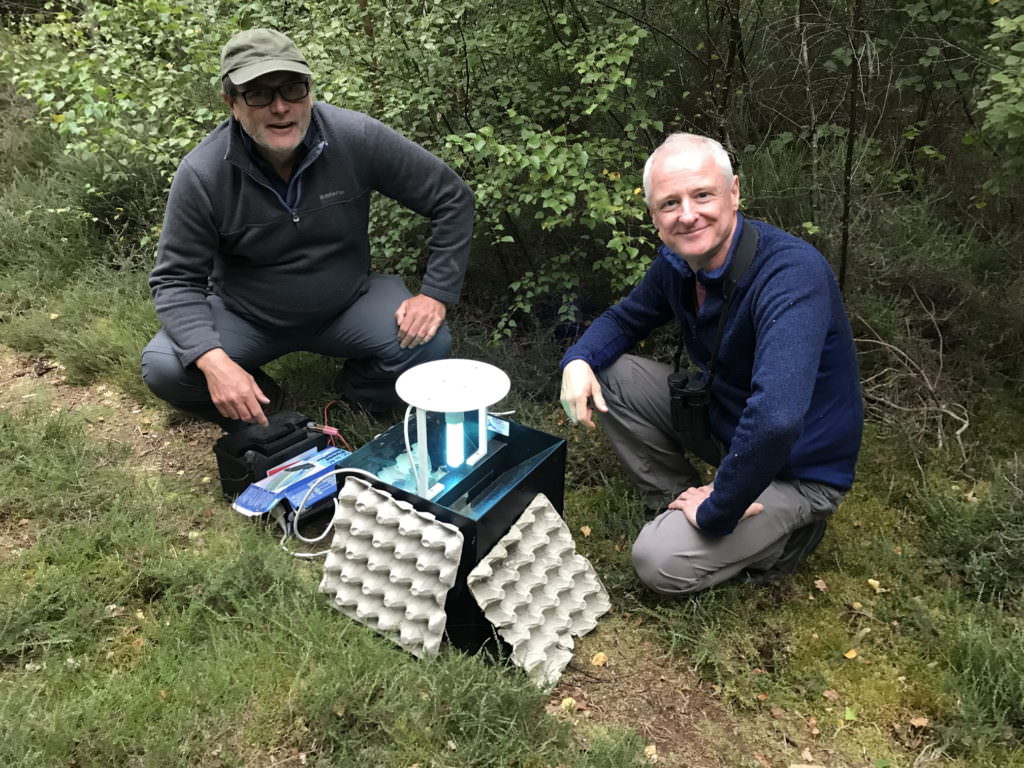
Chris Wilkinson with team member
We are a group of keen amateur lepidopterists from across the South of England. For many years we have been keen to visit the Strathspey area of Scotland during late summer to try to see some of the very special moths that can be found there at that time of year. So from the 5th to 12th August we packed our trapping gear and headed north to our digs close to Grantown on Spey.
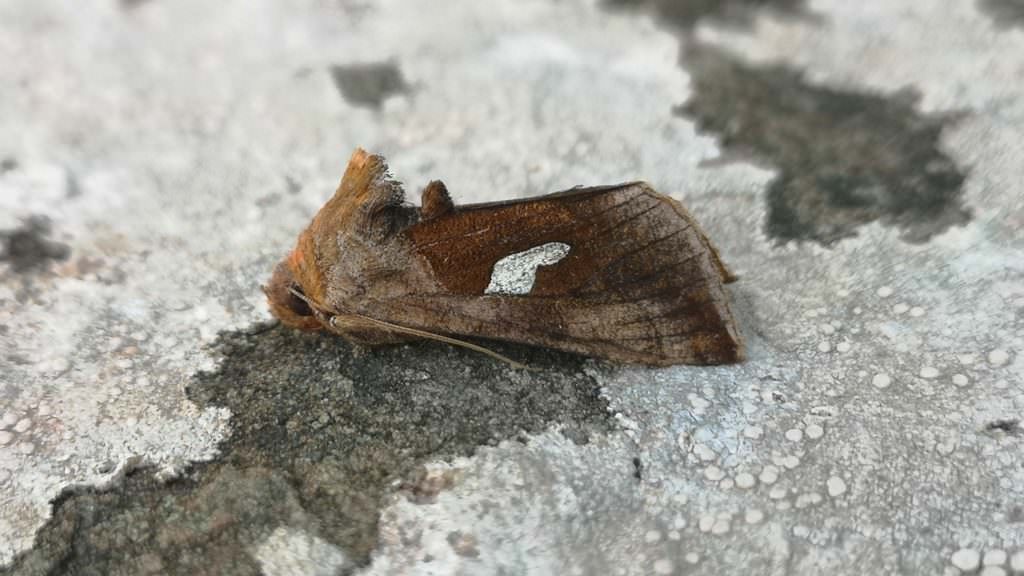
Angle-striped Sallow
The area consists of a rich mosaic of upland habitats supporting many species such as Cousin German or Northern Dart that can only be found in the local area, and those such as the Manchester Treble-bar that are limited to northern upland locations. Special moths we were keen to see included the Dark-bordered Beauty, which is known from Loch Insh and a single site in Yorkshire. For this species we took part in a survey run by the RSPB to monitor the population and extent of their range on the RSPB Loch Insh reserve. We also ran surveys at RSPB Abernethy and on Cairngorm Mountain where many species restricted to the upland moors were recorded.
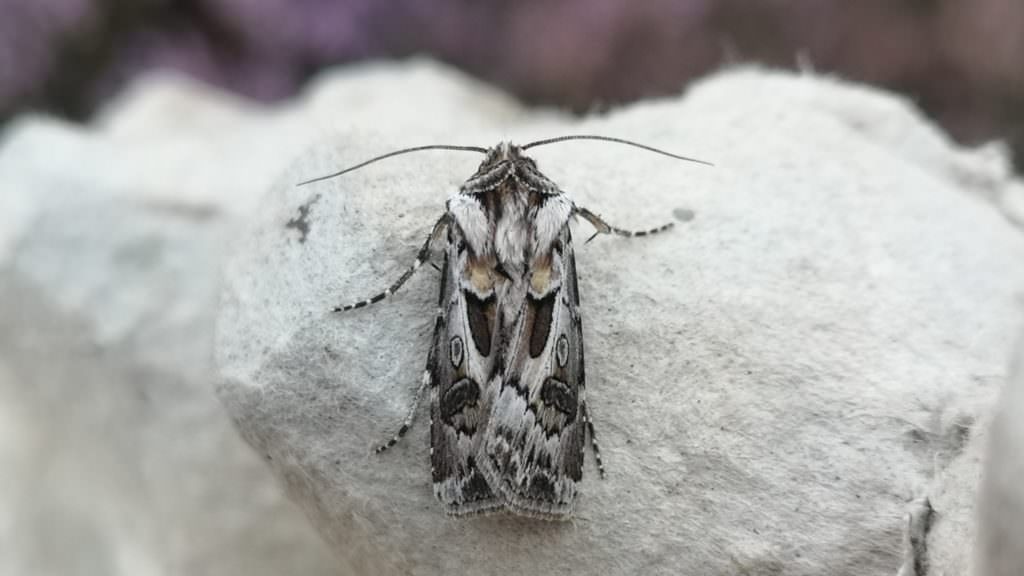
Archers Dart
While we were in the area we were also very keen to visit dune habitat on the Moray Firth to seek some of the species that are found in this unique habitat. We were absolutely delighted when our request to run a survey was granted by the Findhorn Trust and the date of 9th August was tentatively agreed.
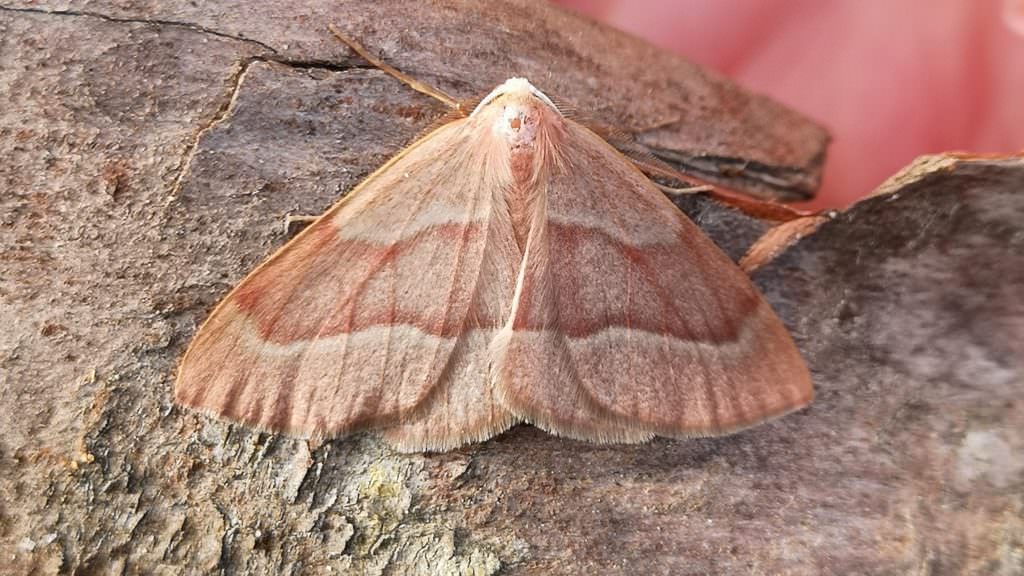
Barred Red
A particular target in the dunes was a declining and difficult-to-see species, the Portland Moth. This species is now only found from Lancashire northwards and requires extensive dunes in good condition. It is a beautiful shade of green with black, white and rufous cross markings but notoriously difficult to trap. Predictably this was one of those critters that eluded us! We did, however, record a much rarer mini beast. Caryocolum blandelloides was described as new to science as recently as 1981 and was discovered as a UK species at Coul Links in August 1994. Its UK range is limited to dune systems in the western Moray Firth so we were aware that we had a chance of seeing this diminutive rarity. We weren’t disappointed and were delighted to find 4 had been attracted to our light traps.
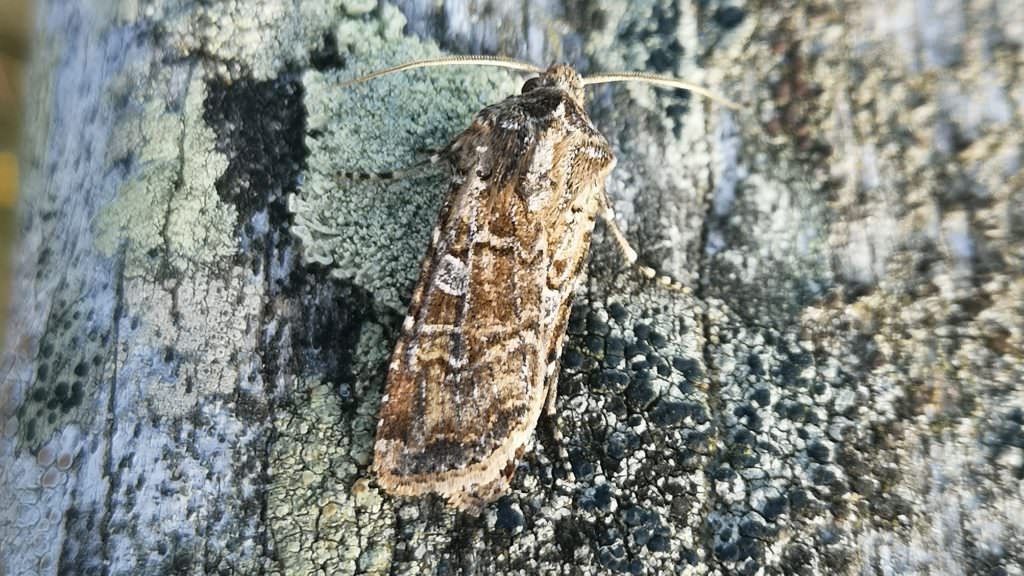
Coast Dart
There were plenty of other sand dune specialities recorded including good numbers of Archer’s Darts and Coast Darts and other northern moths such as Pretty Pinion, Lempke’s Gold Spot and Gold Spangle. In all, 397 moths of 63 species were recorded.
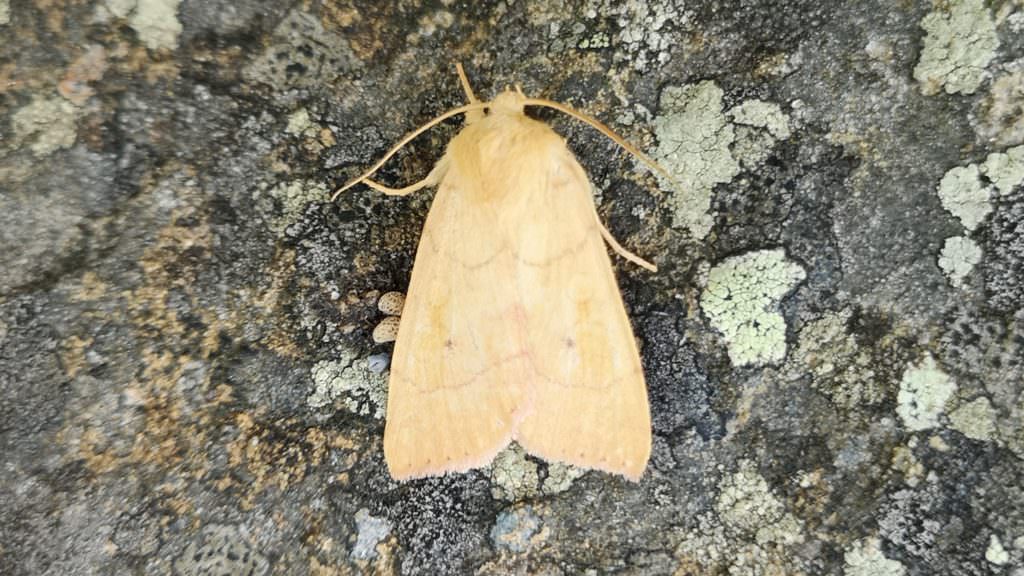
Gold Spangle
We also placed 2 traps in the Findhorn Community Woodland in order to see if the excellent conservation work was paying dividends with the moth fauna. A different range of species were recorded which would be expected in this habitat. The pine feeding Barred Red were present in good numbers as were the Birch feeding Lesser Swallow Prominent. Another scarce Birch species with a northern range, the Angle-striped Sallow, was also recorded. In all, we recorded a respectable 185 moths of 41 species in the woodland which would indicate a good range of laval foodplants present in the area.
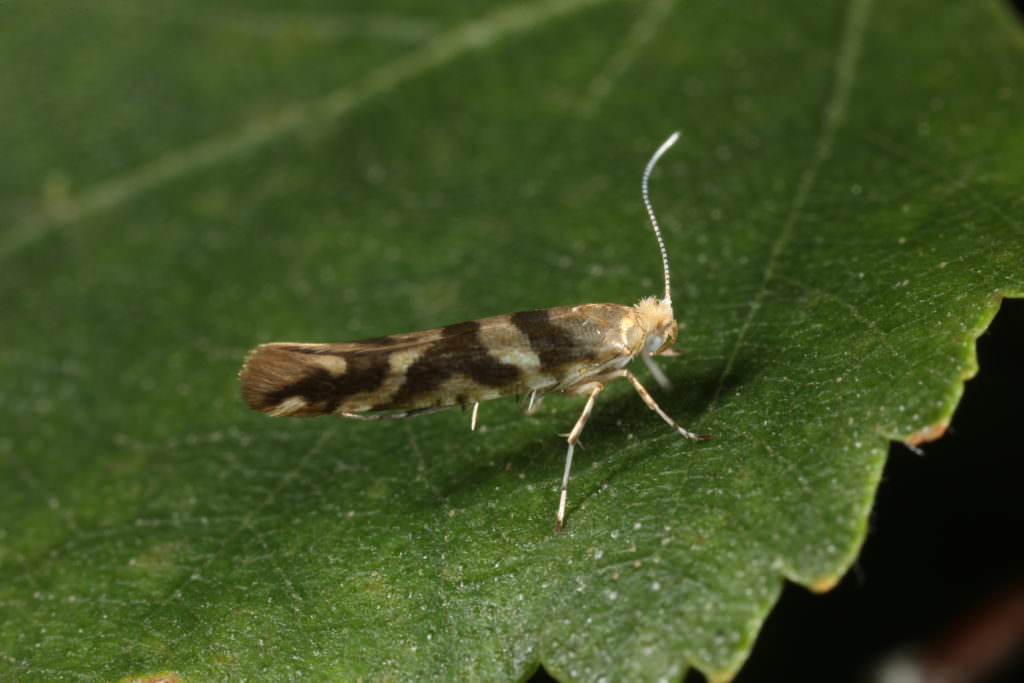
Golden Argent micro-moth (Argyresthia goedarteller birch (Betula pendula), Findhorn Hinterland
Much as we enjoy the pursuit of rare moths in beautiful places, there is a serious aspect to our trapping. All of our records are passed to the relevant county authority and are entered onto the National Moth Recording Scheme database which is run by the conservation charity, Butterfly Conservation. The data we gather contributes to the knowledge of moth populations, their ranges and changes over time. It is an example of citizen science contributing to an awareness of biodiversity on a national scale which would otherwise be unknown.
I would like to add that it was an absolute pleasure and a privilege to visit such a beautiful corner of this little island and contribute in our own little way to the knowledge of what lives there.
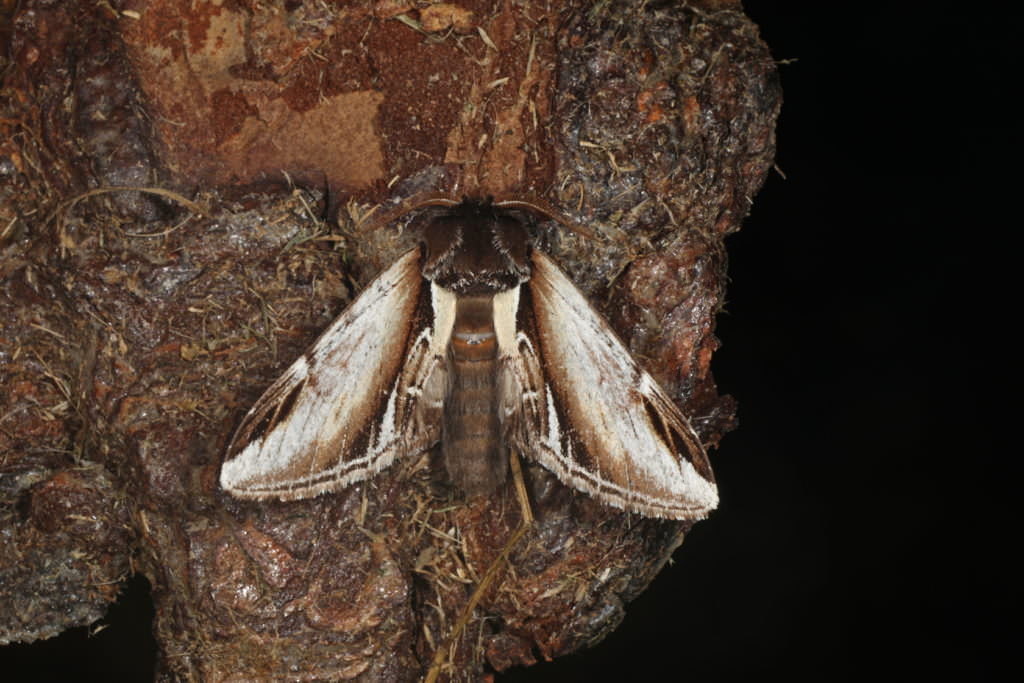
Lesser swallow prominent moth (Pheosia gnoma), Findhorn Hinterland
Chris Wilkinson.
18th August 2023
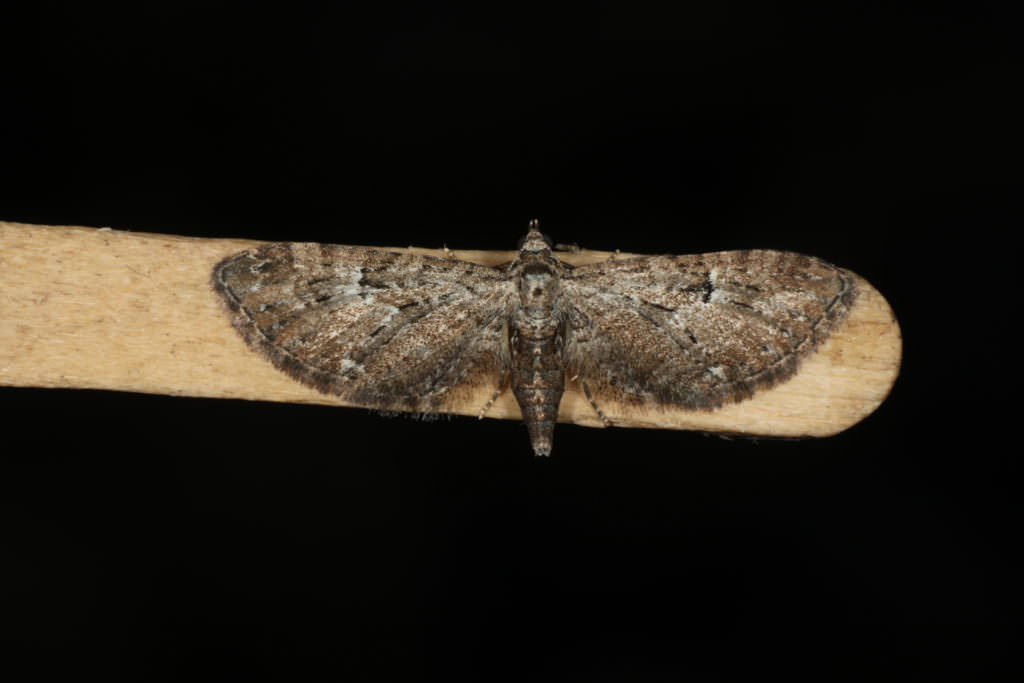
Juniper pug moth (Eupithecia pusillata), Findhorn Hinterland


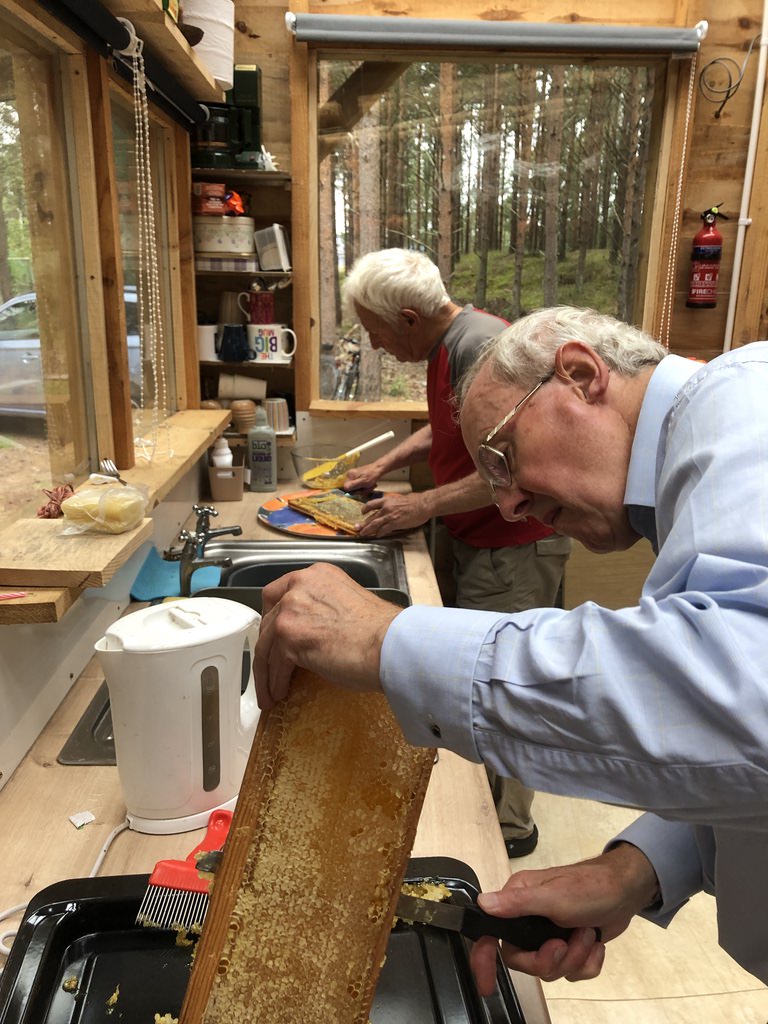
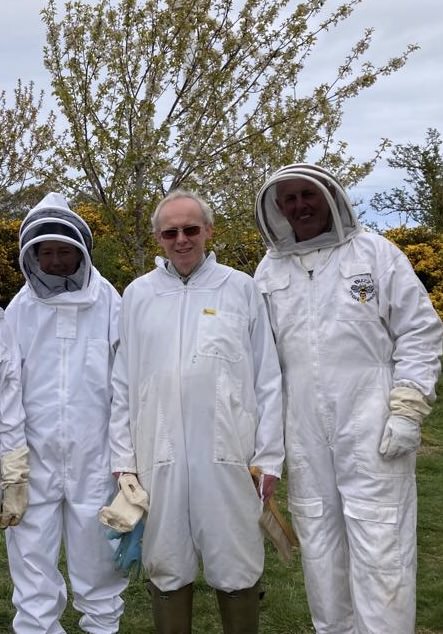
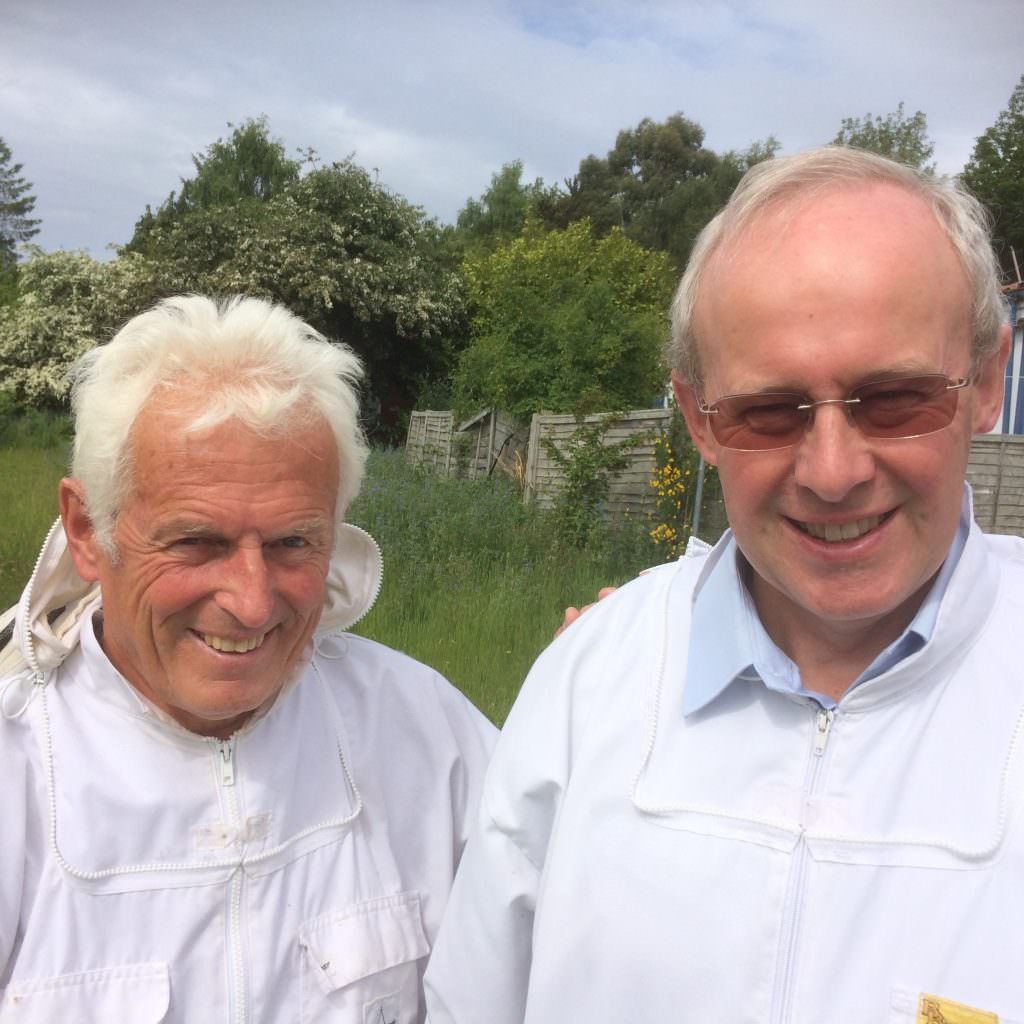
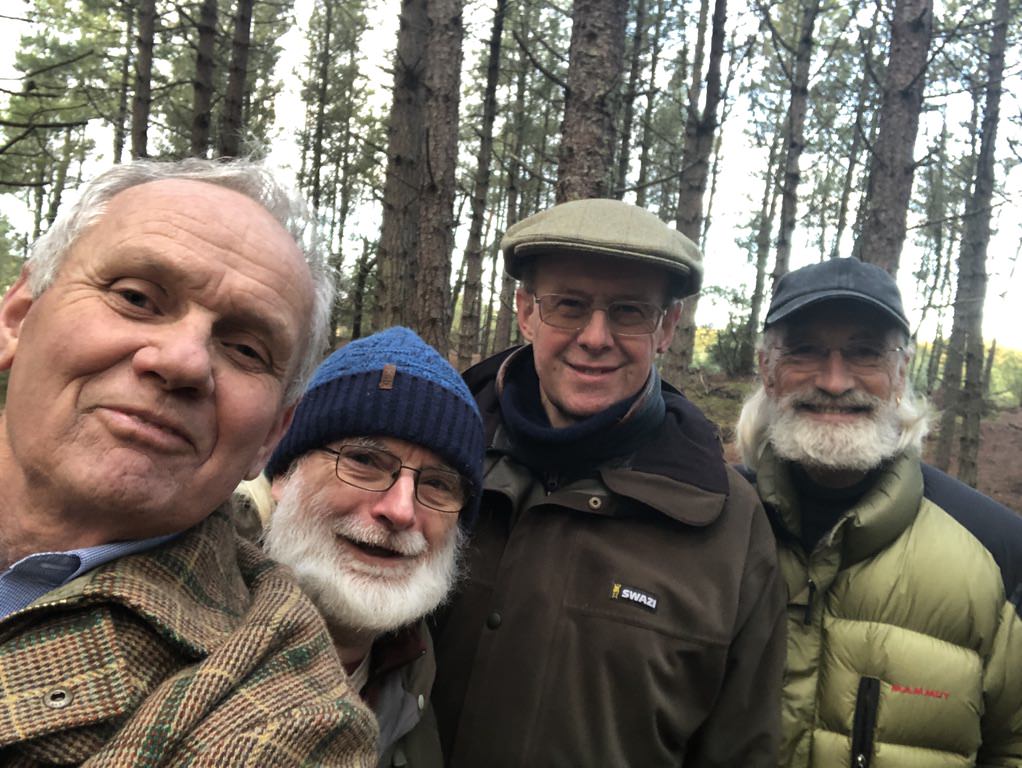
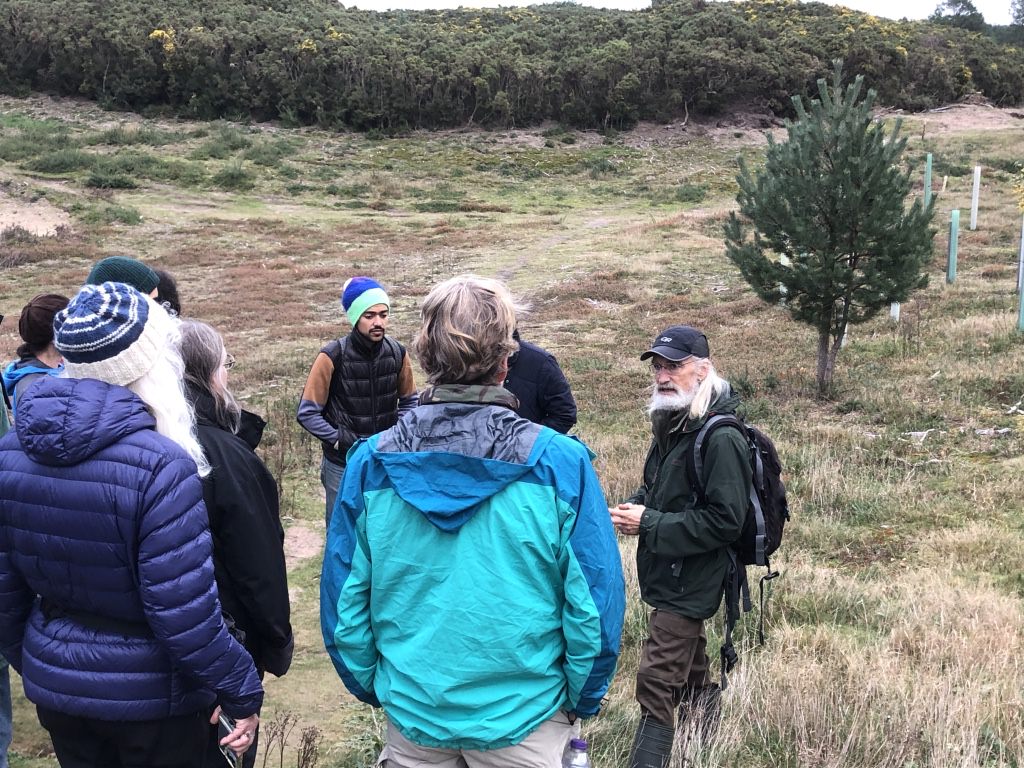
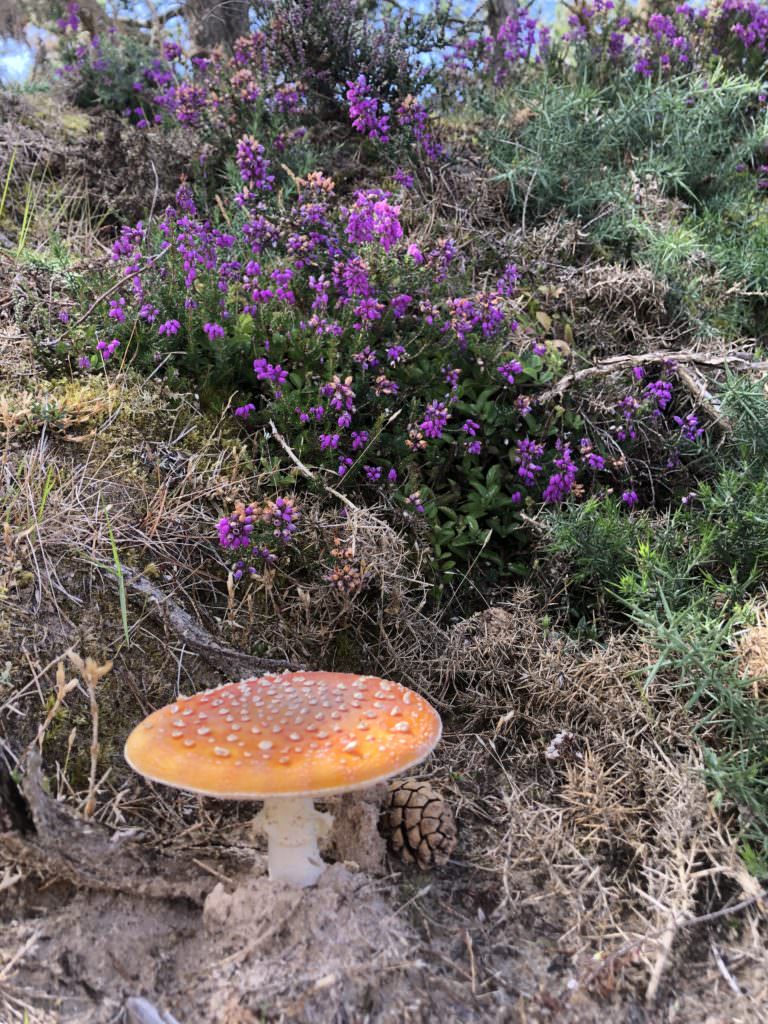
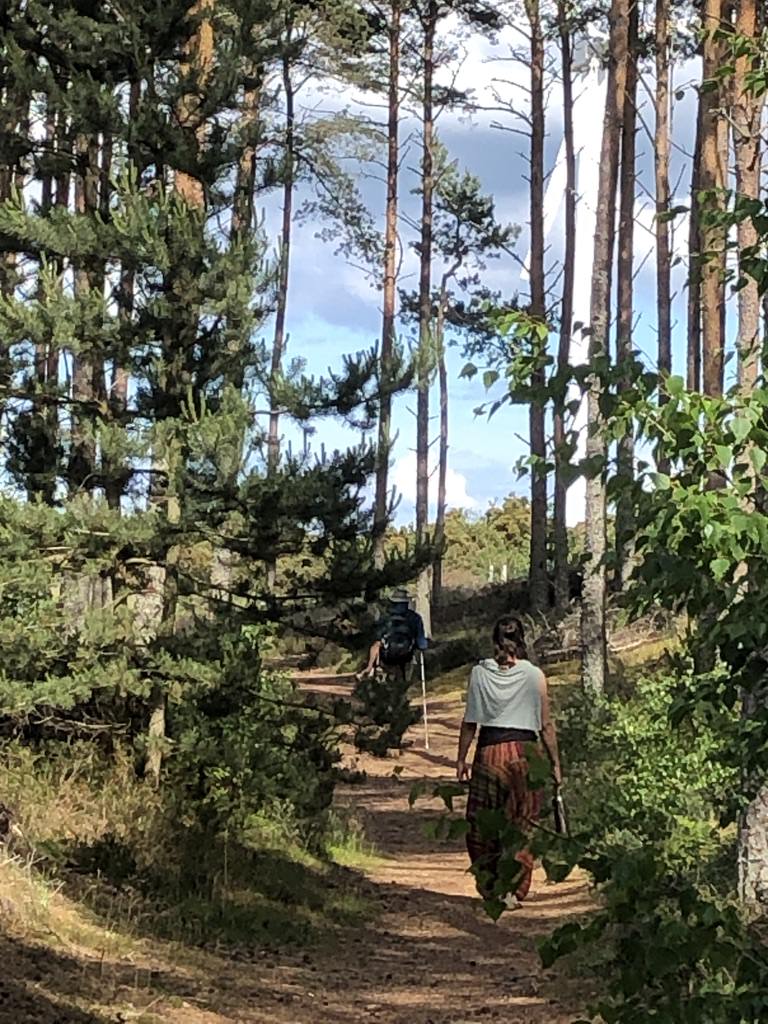
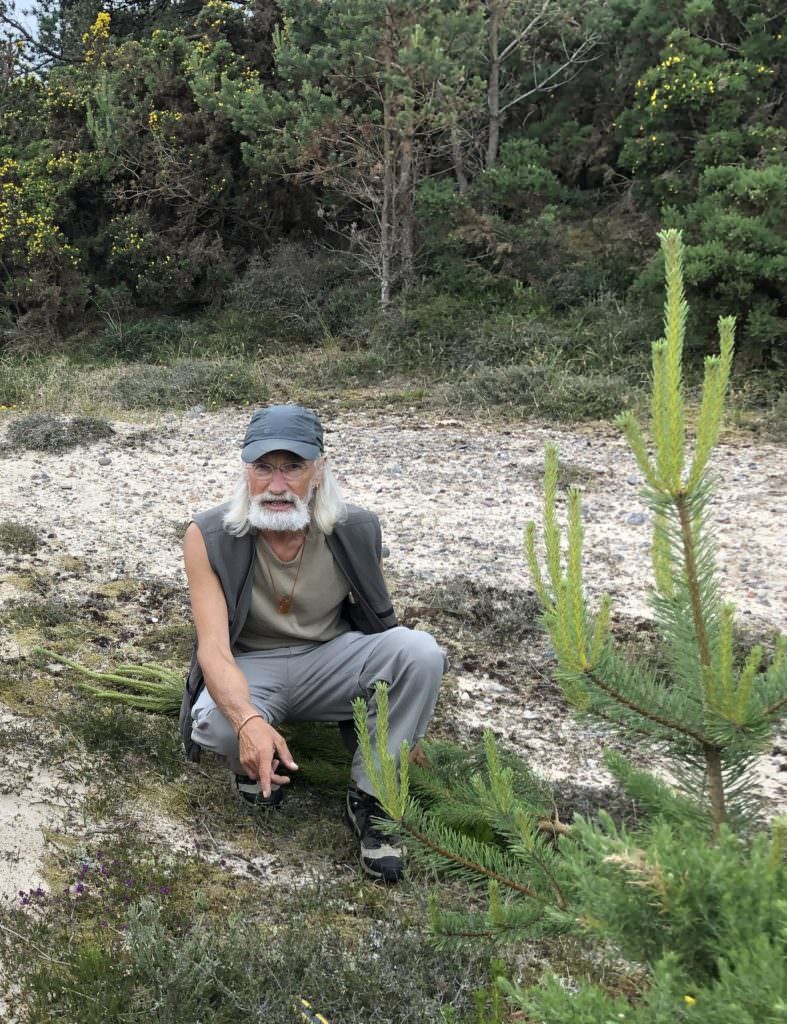
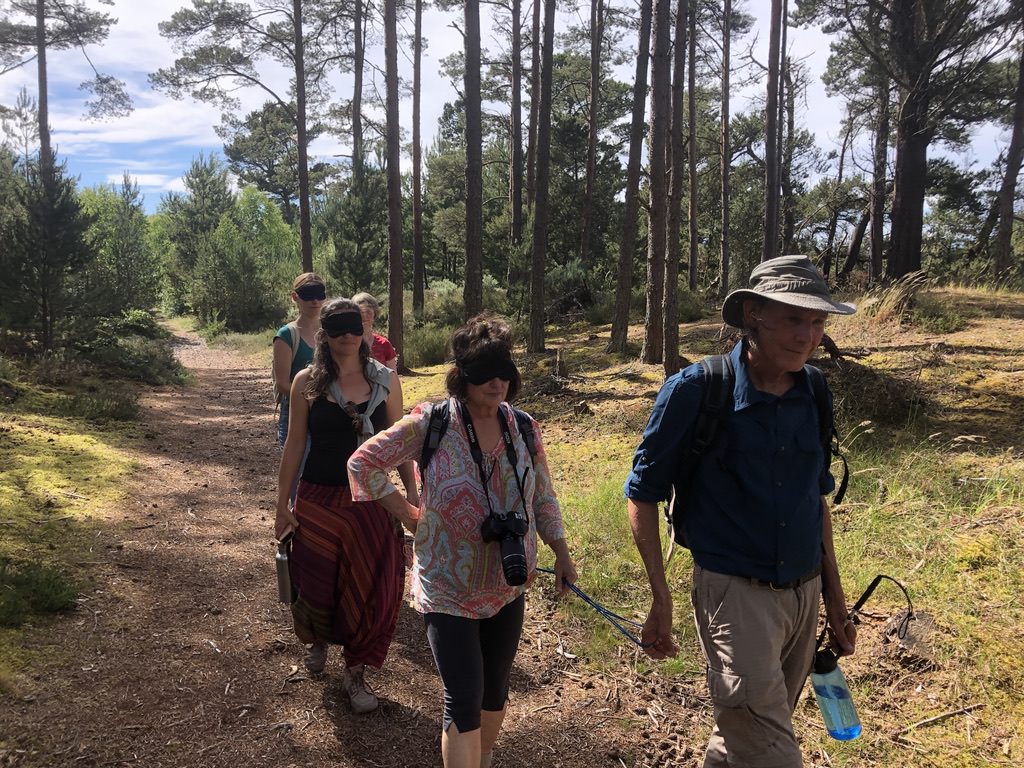
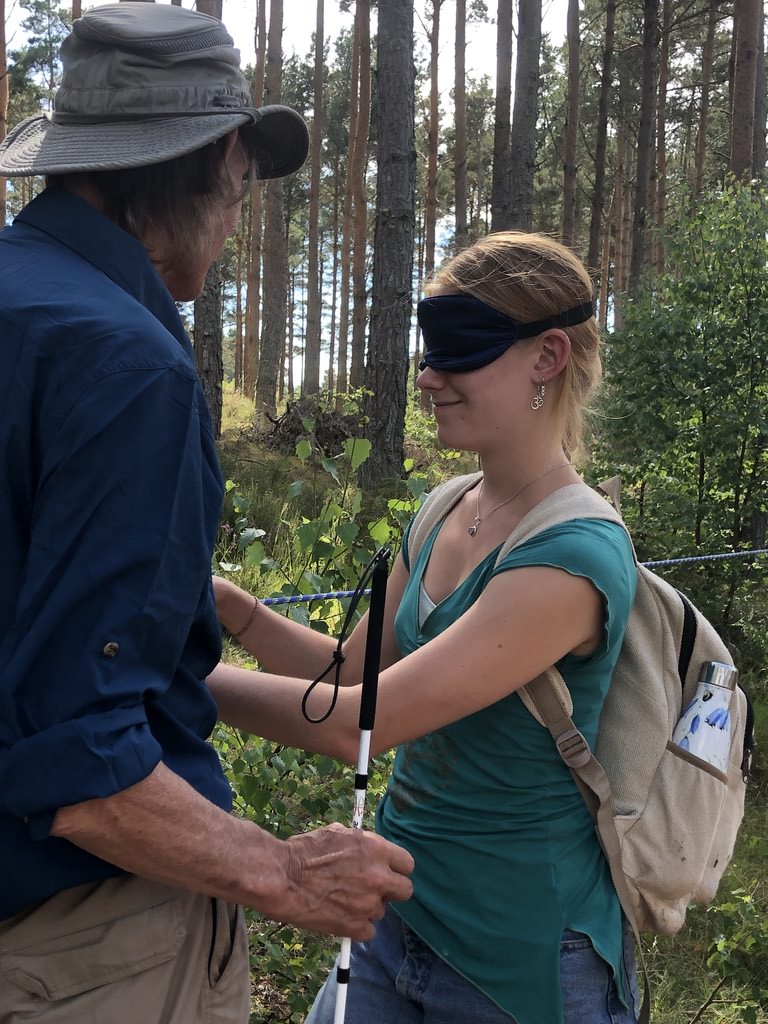
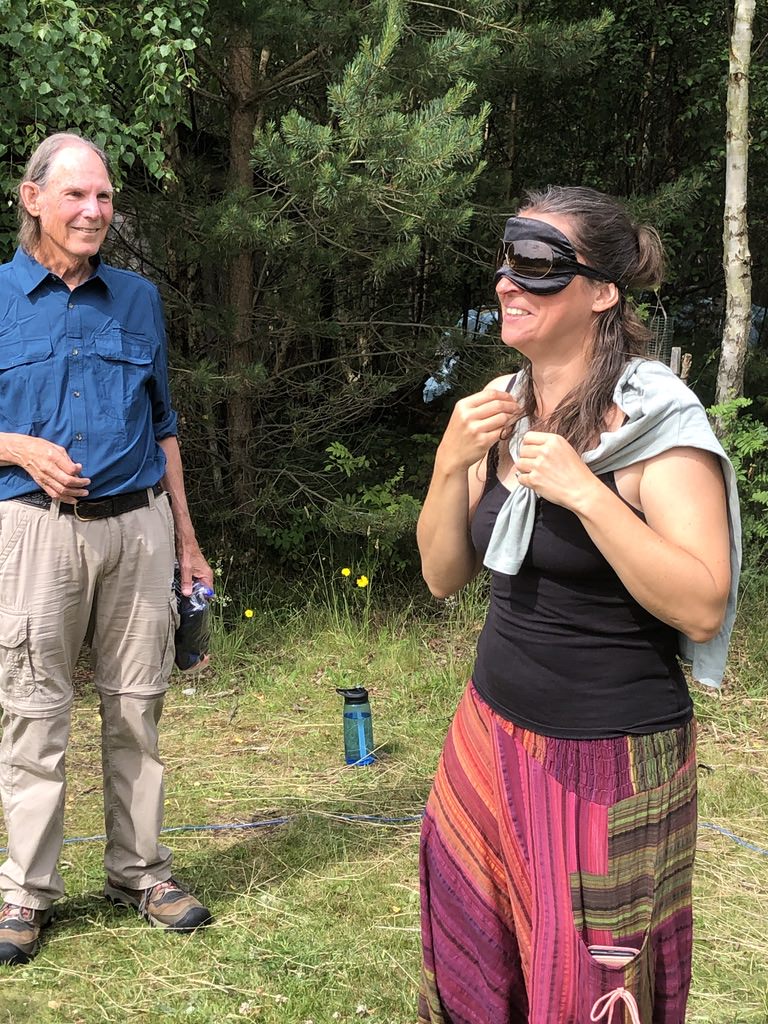
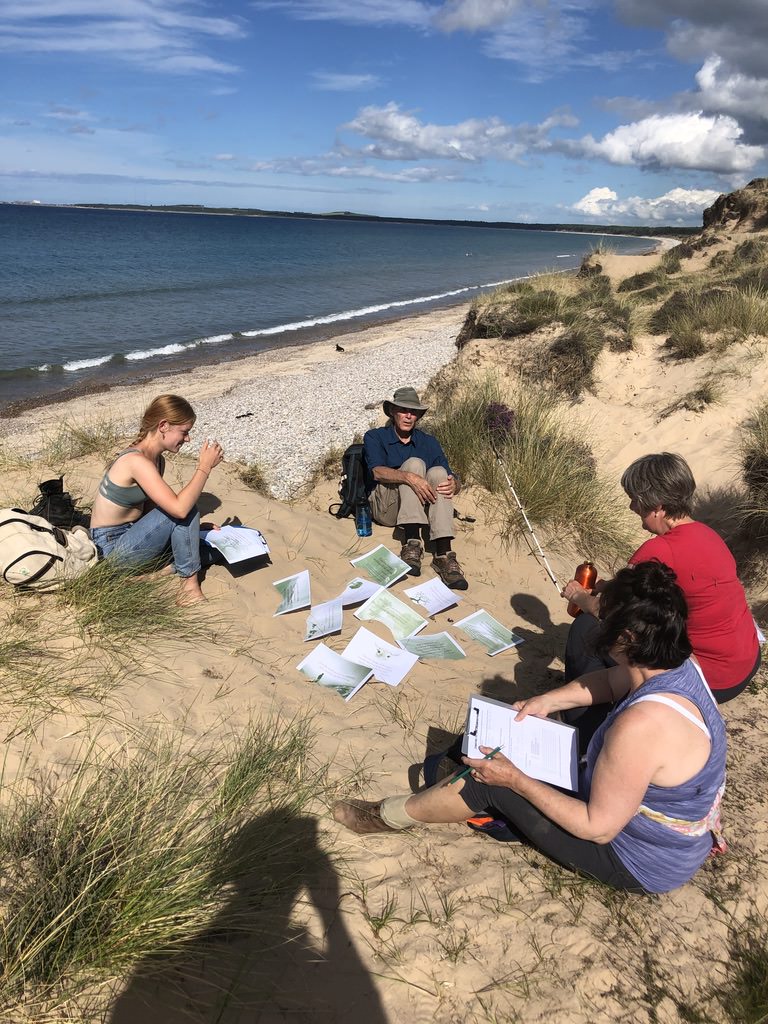
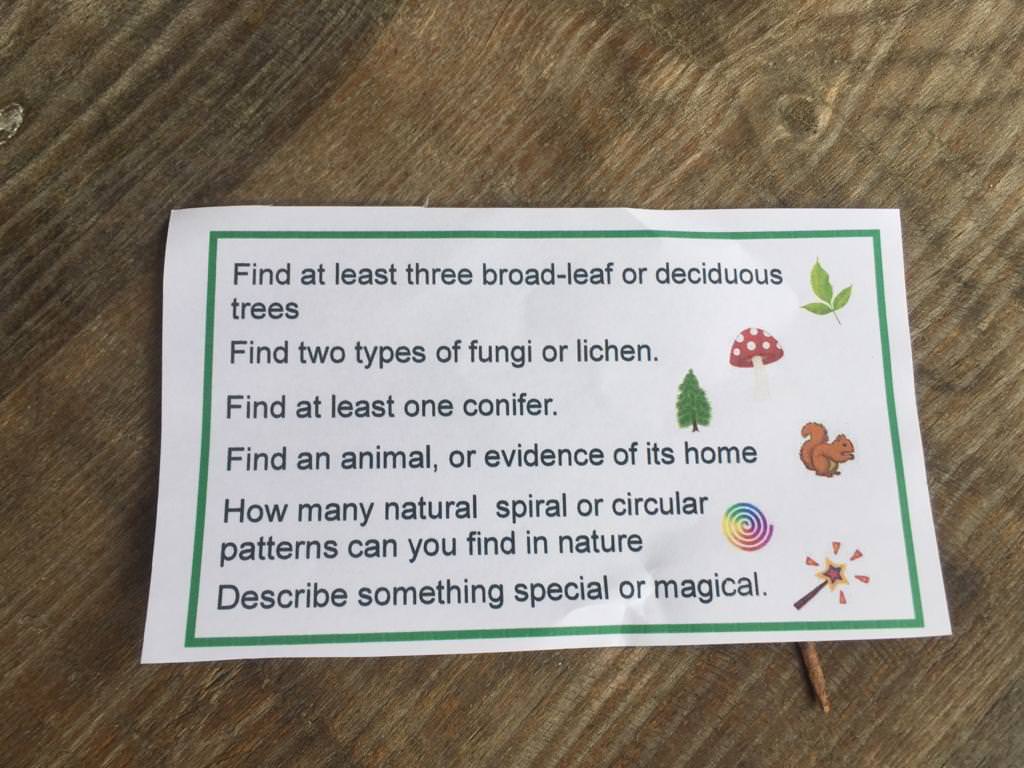
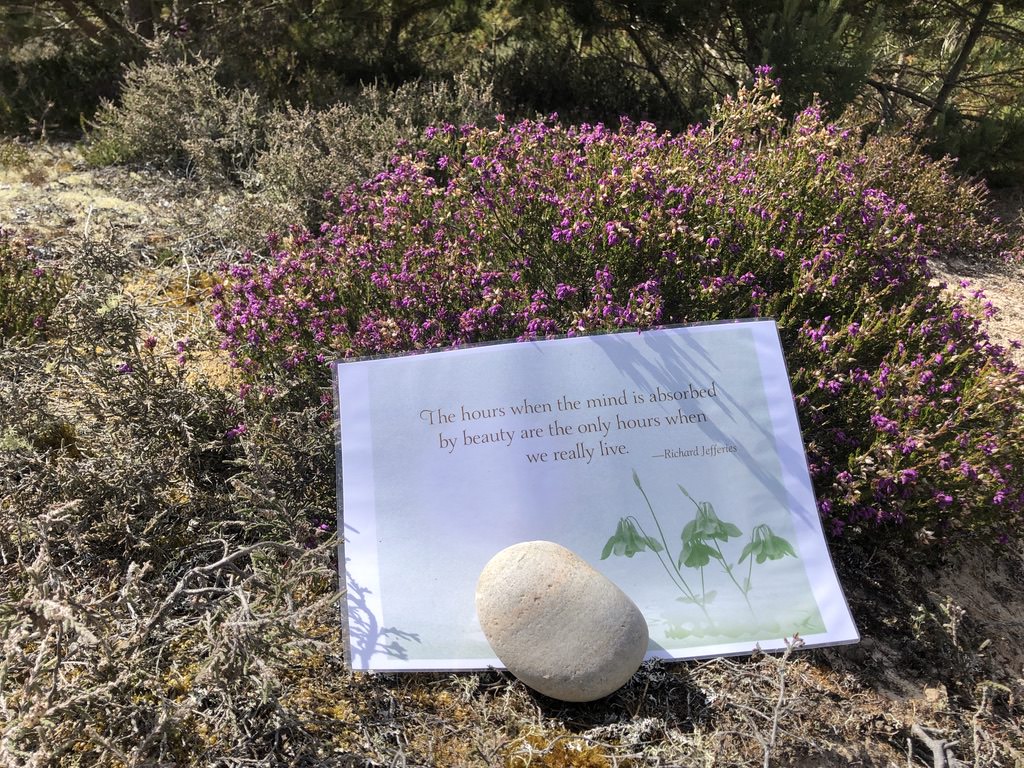
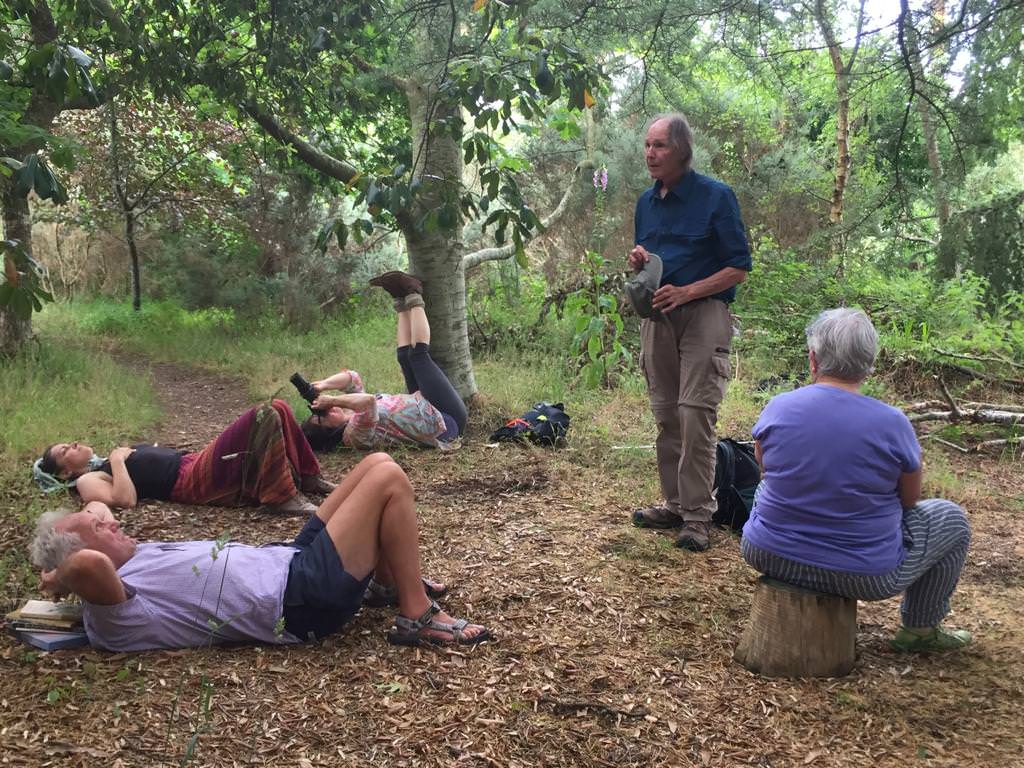
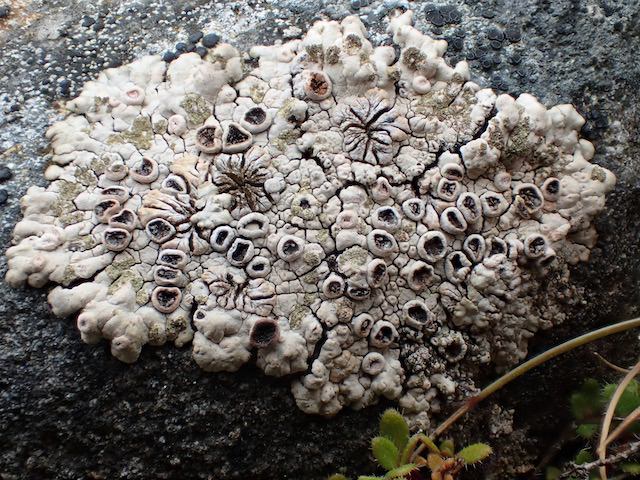
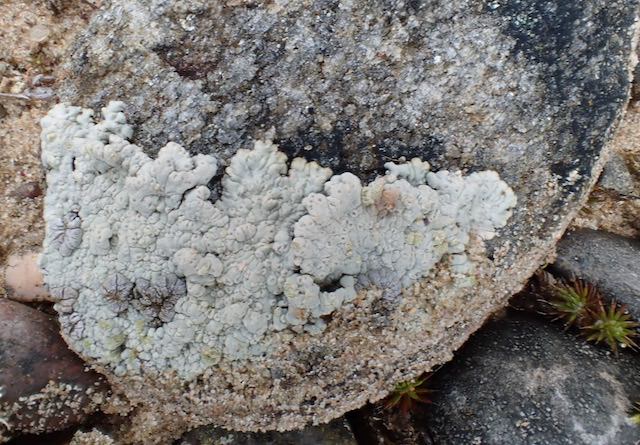
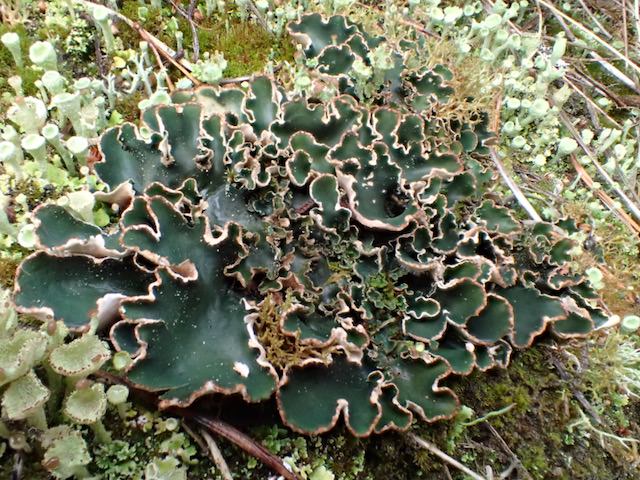
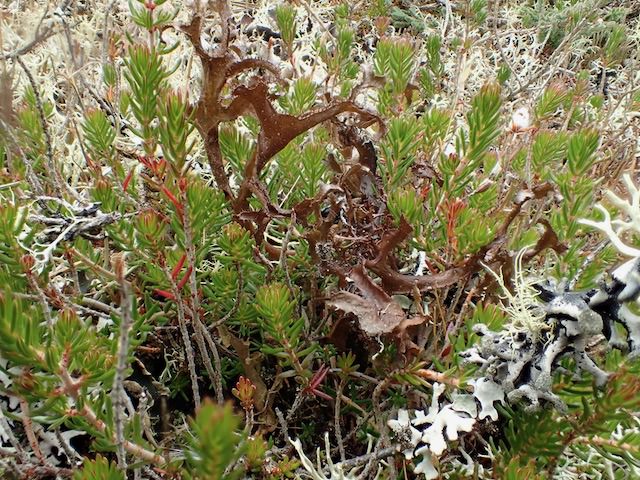
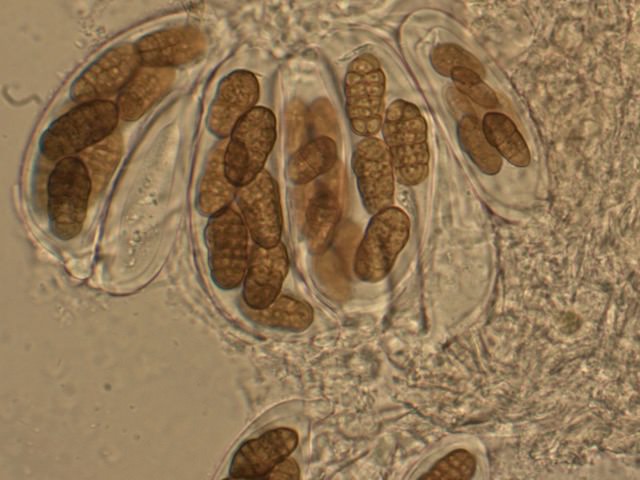
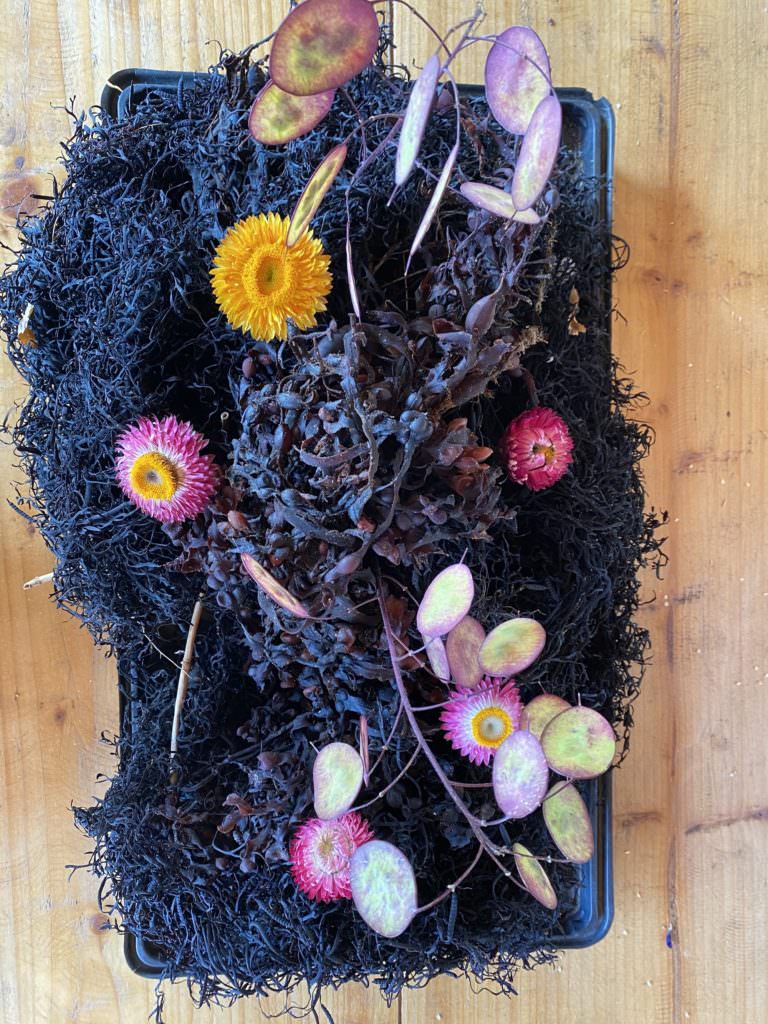
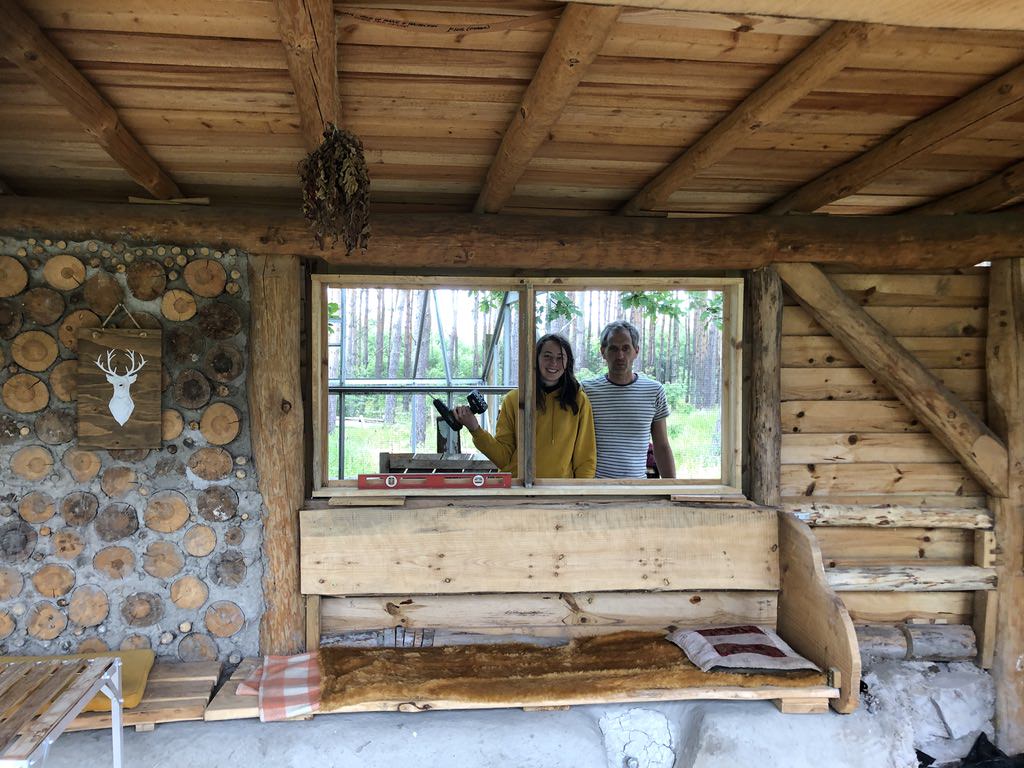
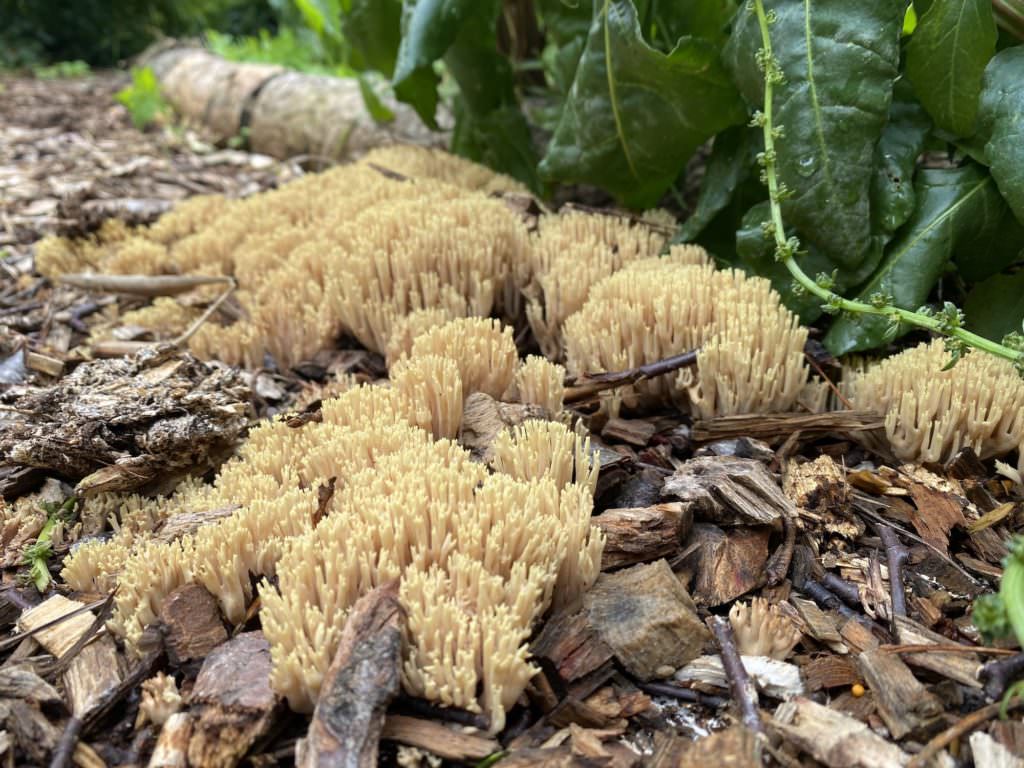
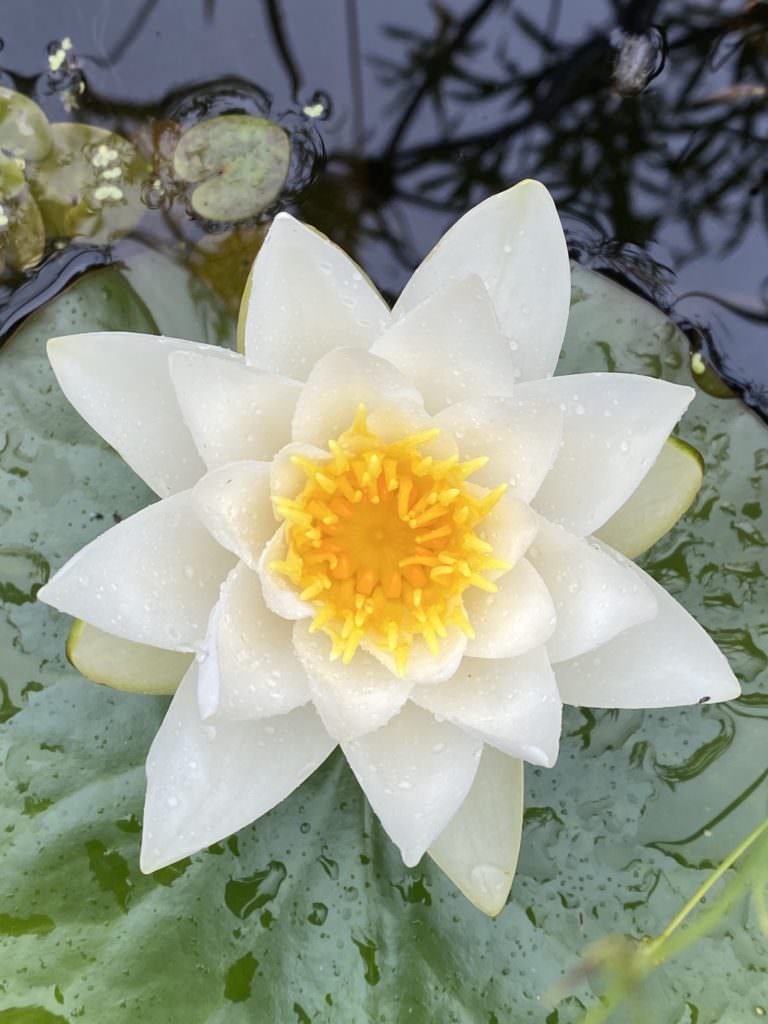
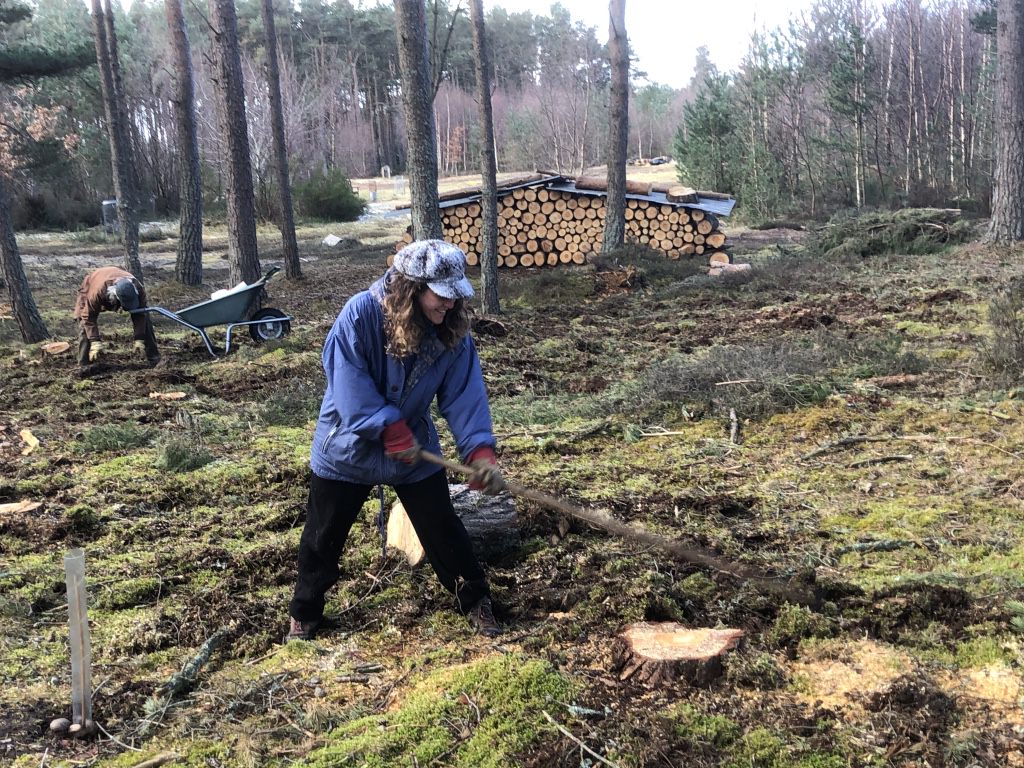
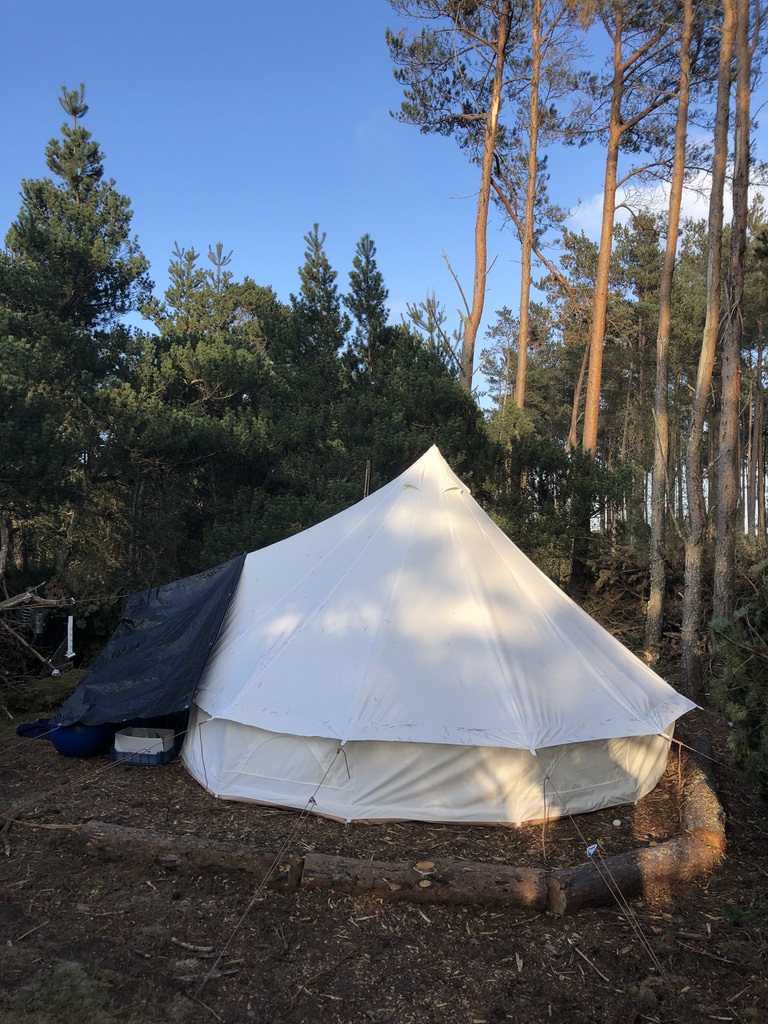
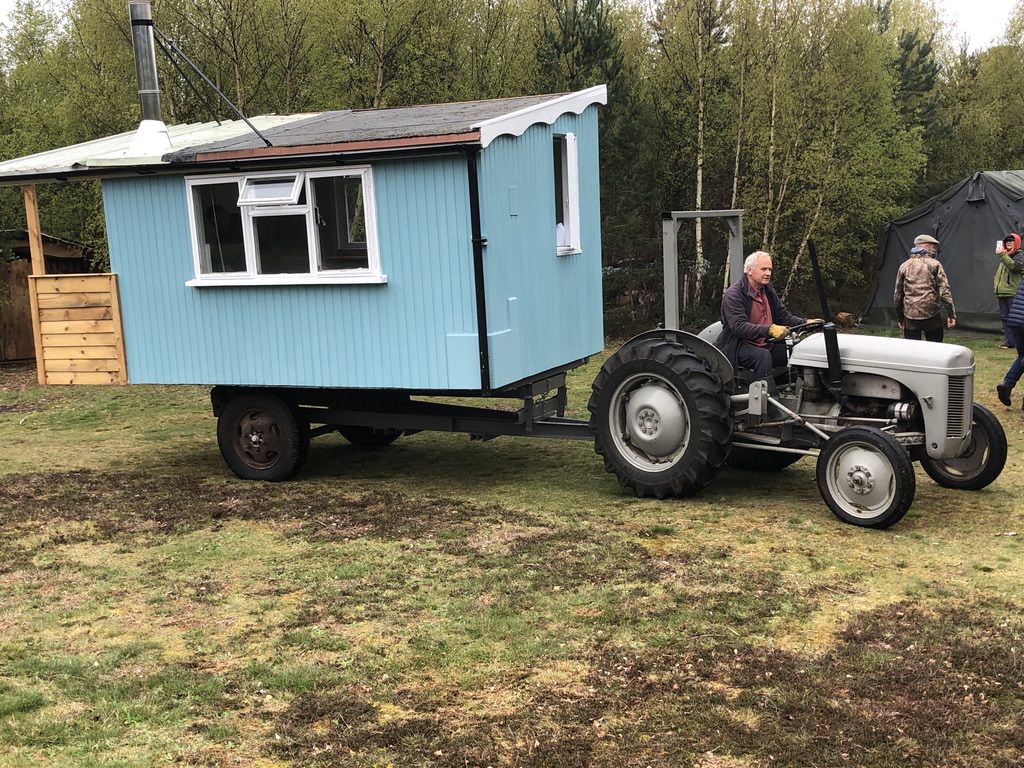
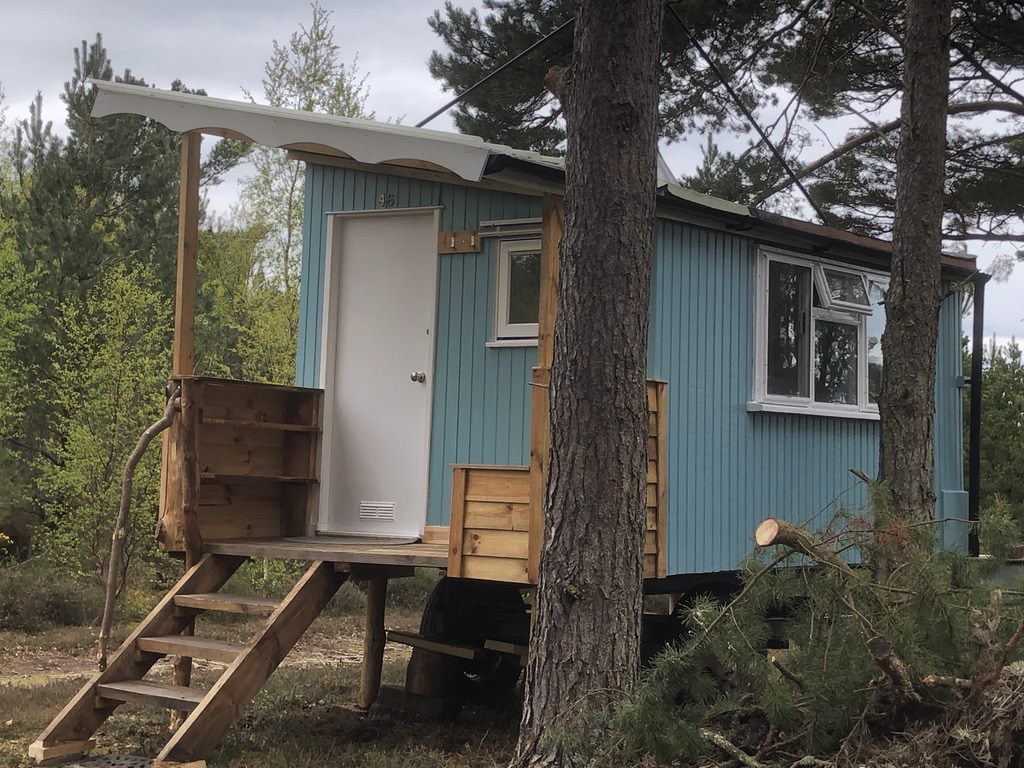
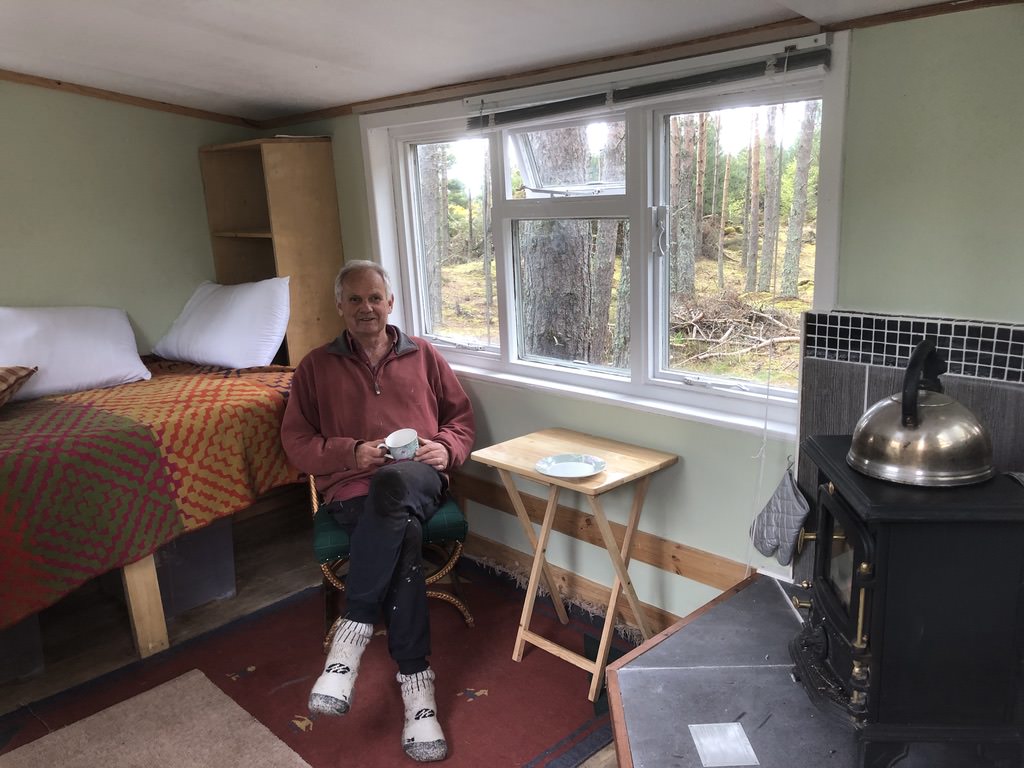
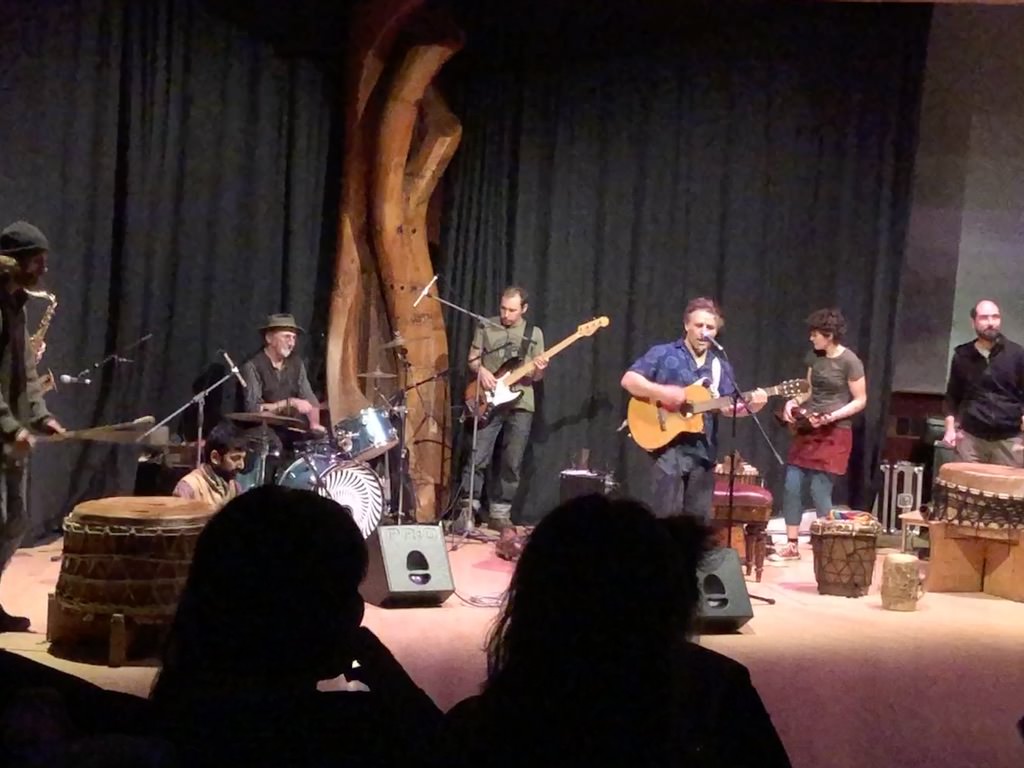
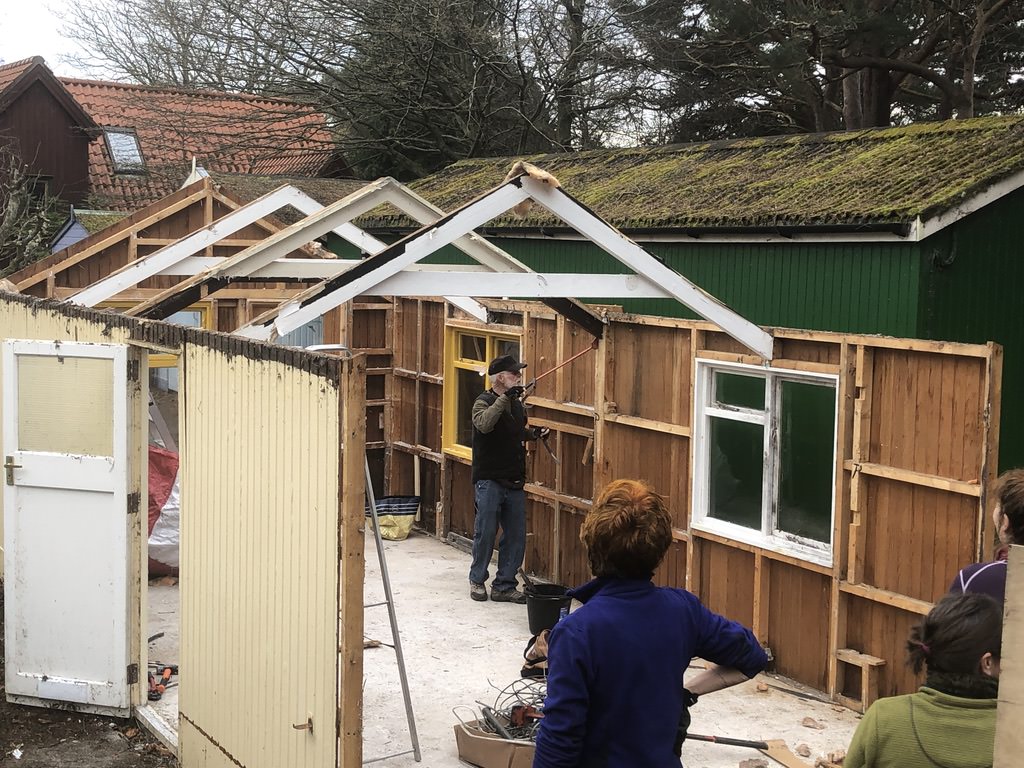
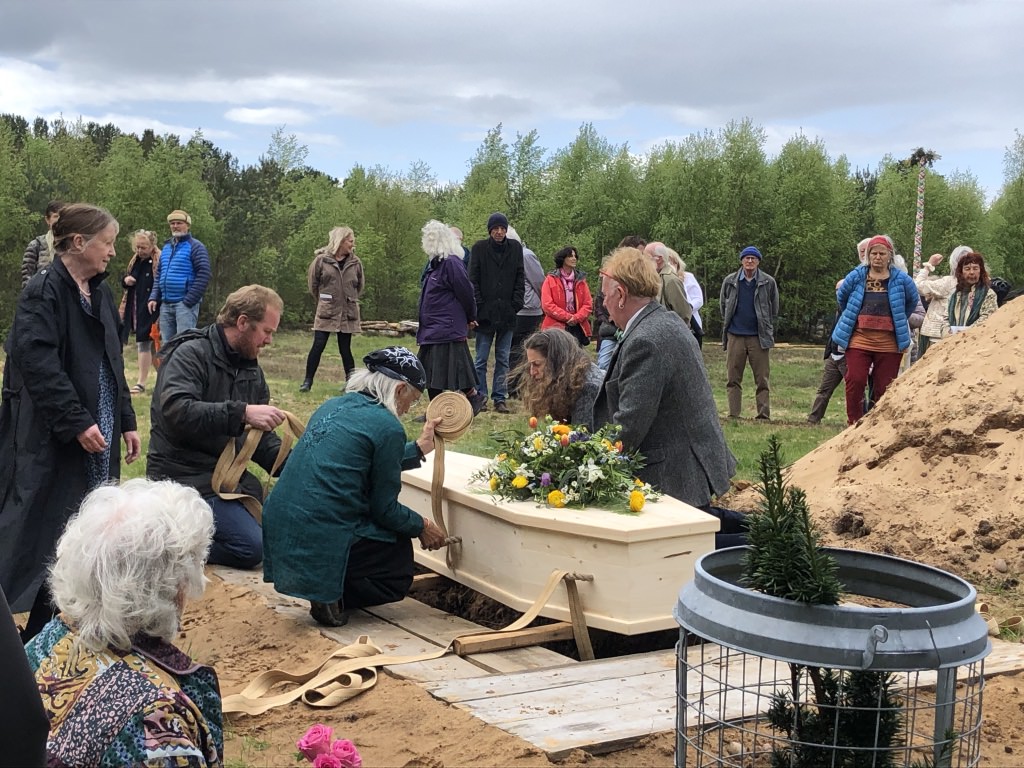
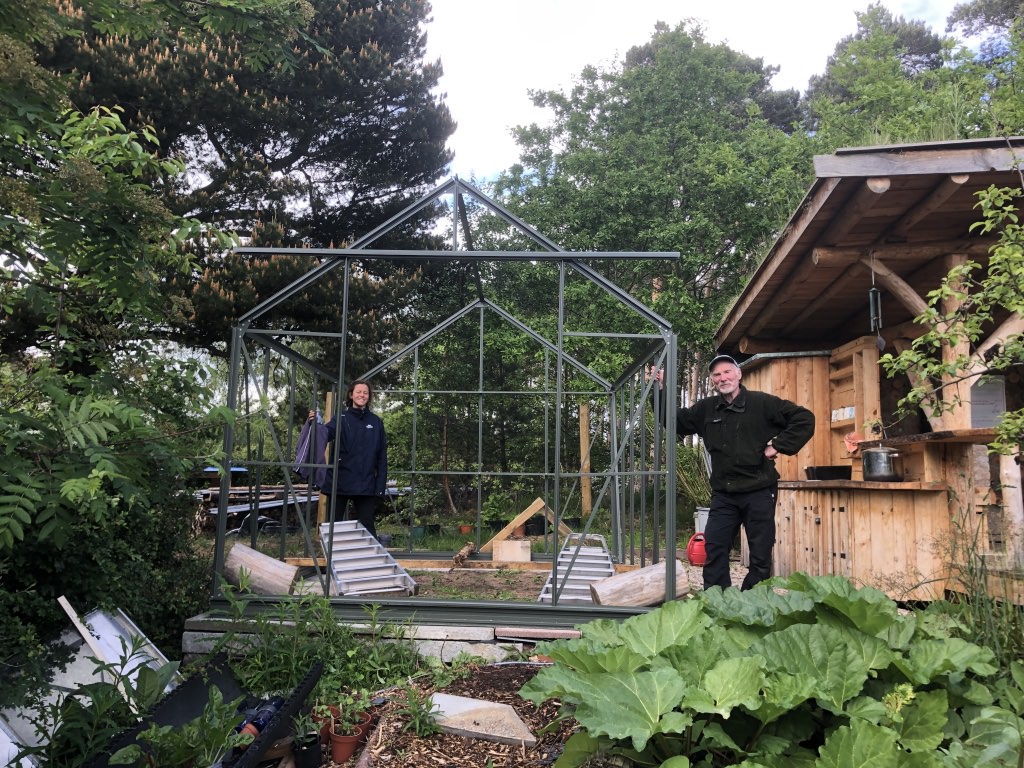
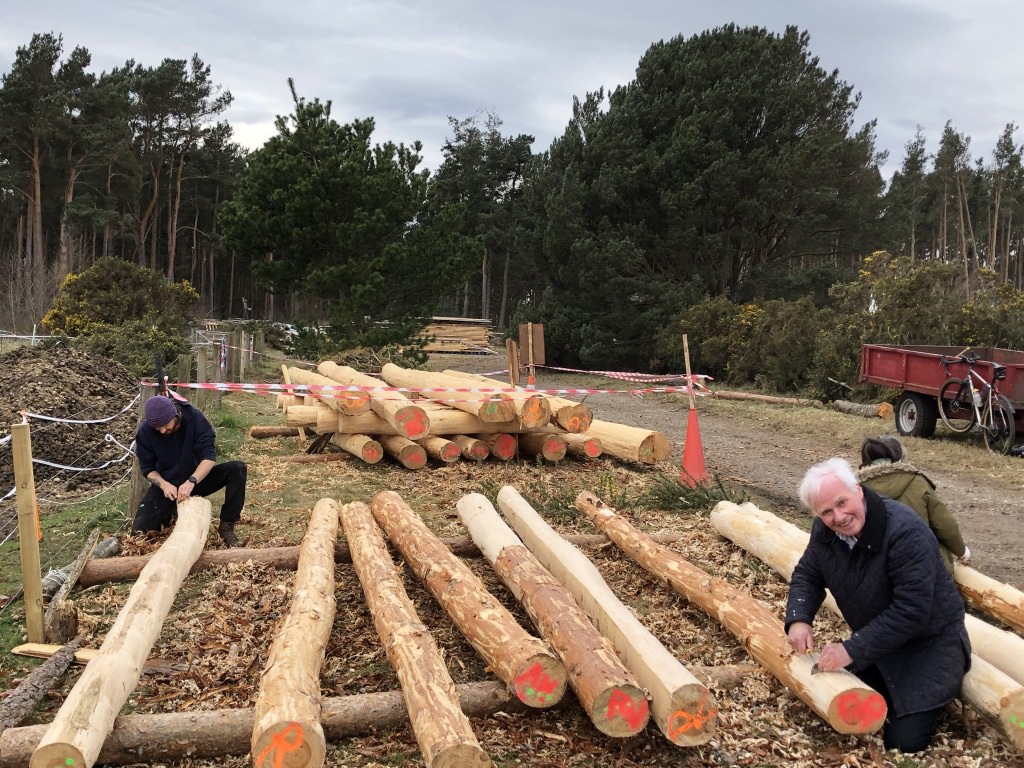















Dune Restoration Project
Species rich grassland (Scottish Biodiversity List)
Maintaining and protecting biodiversity in our world is of international importance and concern and the strategy is to make sure that what happens on the ground in every locality of the earth helps with this mammoth task. To that end FHT commissioned a 2020 Local Biodiversity Action Plan that highlighted what habitats and species are particularly rare and important to conserve on the land it manages and from that it was clear that the dune habitat is of prime importance. How can we maintain and enhance this diversity?
Common blue
The Trust has engaged Sean Reed, a local ecologist, to plan our dune restoration work. The following outline gives a little more detail on the Project. Sean introduced our land management group to the Dynamic Dunescapes publication which has helped inform our thinking and which some readers may find interesting and informative.
Jonathan Caddy
FHT Chair
Project Outline
by Sean Reed MCIEEM
A very special place
Findhorn sand dune ecosystem, once part of the second largest in Europe, is of national importance for lichens, insects and fungi. Many species found here are found at only a handful of places in the UK. For example, Findhorn dunes have the only British record for one species of fungus and the dunes are the most important site for a moth which is found at only one other site in Scotland. Coastal vegetated shingle is included on the Scottish government’s Scottish Biodiversity List of priority habitats.
Dune heath
Under threat
Natural sand dune landscapes are now rarely seen in Europe. They have been lost through the establishment of forestry plantations, housing and industrial developments, caravan parks and golf courses.
Dune heath, sand
Over-stabilisation, through increasing vegetation cover, is a major threat to UK dunes. At Findhorn, dynamic open sand dune habitats, dependent on a plentiful supply of mobile sand, are being lost to gorse and tree encroachment. While this landscape may look wild and natural, it is actually the result of reduced wind speed, caused by the historic construction of houses and planting of woodland. This wind-sheltering effect has allowed gorse to spread, further restricting the natural flow of the wind. Pine trees, from seeds blown from adjoining plantation woodland, add to the problem, so that without action much of the special wildlife interest of the area will soon disappear.
Dune heath, shingle. Scottish Biodiversity List
Our responsibility
The Findhorn Hinterland Trust manages thirty-five hectares of the Findhorn dunes, including ten hectares of woodland. Most of the dune heath is now covered by gorse. Rare sand and shingle habitats, the ‘jewels in the crown’ of Hinterland’s biodiversity, are dependent on regular hand clearance of scrub for their continued existence.
Sand dune habitats, and many of the species that depend upon them for survival, are included on the Scottish Biodiversity List. These are the highest priorities for conservation action, helping to deliver on international targets for cooperative biodiversity recovery. We have a duty to respond to the biodiversity crisis on the land which we care for.
Dark Green Fritillary, knapweed
Vision to action
Small heath. Scottish Biodiversity List
We recognise the sensitivity of the area and the value which the local community and visitors place upon it. Without community and public understanding of the need for this work, it may appear to some to be destructive. Public consultation and information is a key part of the Project.
Sean Reed.
Findhorn Hinterland Trust Dune Restoration Project
LEARN MORE:
To learn more about the threats to wildlife species in the dunes, and how the FHT is planning to restore sand and shingle habits, please come along to this talk: